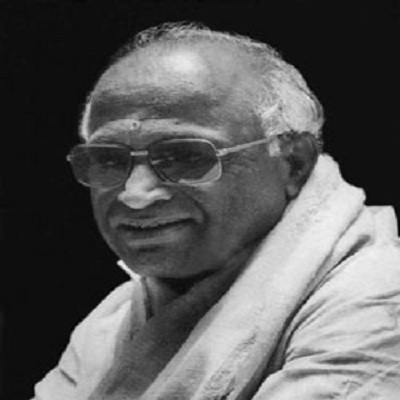
He was born in Burma on January 9th 1928. His father Ramaswamy was a government employee. Raghu inherited much of his music from his mother Ananthalakshmi and his aunt, both very good singers. His mother was his initial source of inspiration. His grandfather Radhakrishna Iyer, a highly respected figure in Burma, was an authority of sorts on Carnatic music. Raghu began his early training under one Swamy at Rangoon. However, it was the visit of Thinniam Venkatarama Iyer to Burma that brought a sharp focus to the boy’s talents. At the end of a ‘crash course’ under Venkatarama Iyer for about twentyone days, the teacher was impressed with his pupil. He offered to teach him during his visits to Madras. With war impending, the family had to relocate to Madras and soon Raghu came under his tutelage. The lessons were about a year old when fate intervened again. The family moved to Palghat in 1940—as part of the war time evacuation of Madras—so that Raghu could undergo training with the stalwart, Palghat Mani Iyer. It is interesting to note that Raghu had no other connection to Palghat. His family belonged to Trissoor. The initial lessons with Mani Iyer saw the maestro focusing on Raghu’s fingering techniques and making changes to suit his style of play. Thus began a long association that went on to make Raghu his foremost disciple. Raghu was all of thirteen years, when he accompanied Ariyakudi Ramanuja Iyengar at Ambalapuzha. It was a memorable concert, with the equally young T.N. Krishnan accompanying on the violin.
Raghu completed his B.A. in Mathematics, writing his exams more by intuition than actual preparation. Astronomy and Projectile Geometry were not really his favourite subjects but he did get through somehow. He was highly irregular in attending college. He recalls with a twinkle in his eye that he was playing for Madurai Mani Iyer in Coimbatore on the eve of his Astronomy exam! He was so sure he would not make it that he did not even bother to check his results. “It’s a wonder I passed!” he says. Palghat Raghu enjoys challenges, playing for different artists. He feels it is natural to adapt your style to that of the main artist.“
He continued to live in Palghat and travel from there for his various assignments. Meanwhile, he became a part of Palghat Mani Iyer’s family by marrying his sister’s daughter Mahalakshmi. Raghu was invited in 1965 to the Wesleyan University, Connecticut, to teach Indian music. He taught there for two years.
His approach to music was wholesome and he does not make any compromises. An innovator, he has many firsts to his credit. He is a much sought after accompanist and teacher. His has been a life dedicated to the pursuit of excellence in music. With a career spanning almost six decades, Raghu’s style stood out for its effortless fingering techniques and technical brilliance. His playing was marked by the characteristic usage of the Toppi, producing suitable rhythmic sounds to match the melody of the music he accompanied, thereby enhancing the overall performance. He made sure that the percussion went hand in hand with the bhavam or expression of the music and suited the lyric or sahityam being pronounced.
The tani avartanams with other rhythm virtuosos such as Harishankar, Nagarajan (kanjira), Alangudi Ramachandran, "Vikku" Vinayakram, Subhash Chandran (ghatam), remain quite memorable to this day.
He was honoured with many awards and titles. A few are listed here as a sample - Sangeet Natak Akademi Award in 1983,Palghat Mani Iyer award, Padma Shri in year, Kalaimamani (Tamil Nadu), Nada Brahmam (Narada Gana Sabha) and Sangeetha Kalanidhi in 2008 (Music Academy). Renowned young vocalist, Abishek Raghuram is his grandson.


